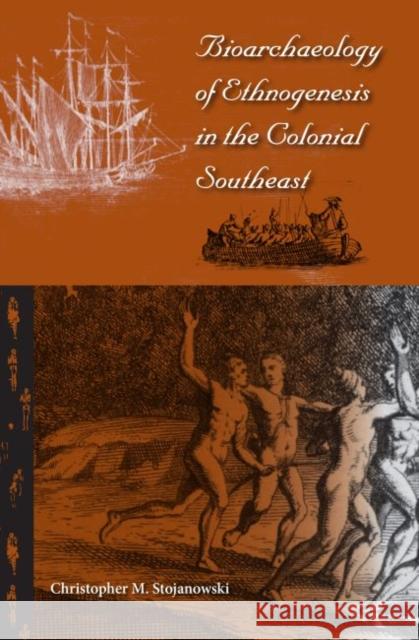Bioarchaeology of Ethnogenesis in the Colonial Southeast » książka
Bioarchaeology of Ethnogenesis in the Colonial Southeast
ISBN-13: 9780813049038 / Angielski / Miękka / 2013 / 256 str.
Using bioarchaeological data gathered from the remains of Apalachee, Timucua, and Guale individuals from mission cemeteries, the author operationalizes this biosocial approach to ethnogenesis to argue that these groups adapted to colonialism in ways that resulted in a new identity, which he identifies as the Florida Seminole. Southwestern Mission Research Center Revista Clearly and elegantly demonstrates how bioarchaeological data, specifically metric data on dental morphology, can be used to elucidate otherwise obscured patterns of social identity, cultural change, and the circumstances which drove the formation of ethnic identities . . . throughout a volatile but poorly documented period of history in the southeastern U.S. South Carolina Antiquities Examines precontact, early mission, and late precontact indigenous populations from the north Florida Georgia coast region. . . . Investigates broad patterns of Native American ethnic identity and how they changed over time. Journal of Middle Atlantic Archaeology Stojanowski compellingly situates biological distance research as central to the ethnohistorical and anthropological study of Native American and colonial history in the Southeastern United States. The intricate discussion of his statistical methodology especially his acute and appropriate attention to the microevolutionary basis of his analyses and results will very much be a must-read for all bioarchaeologists. Ann M. Kakaliouras, Whittier College This artful combination of dental, archaeological, and historical information contributes much to our understanding of the peoples of the early historic Southeast. It will be of special interest to researchers grappling with how best to employ skeletal remains in the study of ethnogenesis. George Milner, Pennsylvania State UniversityThe story of Spanish explorers, the missions that followed, English slave raids, and Creek and Seminole political machinations has previously been told through the lens of history and archaeology. Christopher Stojanowski adds a biological component to the saga of colonial demographic collapse by focusing on identity transcendence and regeneration. As such, this work offers a different perspective on Florida s indigenous tribes, one that is explicitly interdisciplinary in inferring the formation of a new ethnic consciousness among La Florida s indigenous communities.Christopher Stojanowski is a bioarchaeologist affiliated with the Center for Bioarchaeological Research at Arizona State University s School of Human Evolution and Social Change. He is the author of BioculturalHistoriesinLaFlorida and Mission Cemeteries, Mission Peoples.A volume in the series Florida Museum of Natural History: Ripley P. Bullen Series
"











